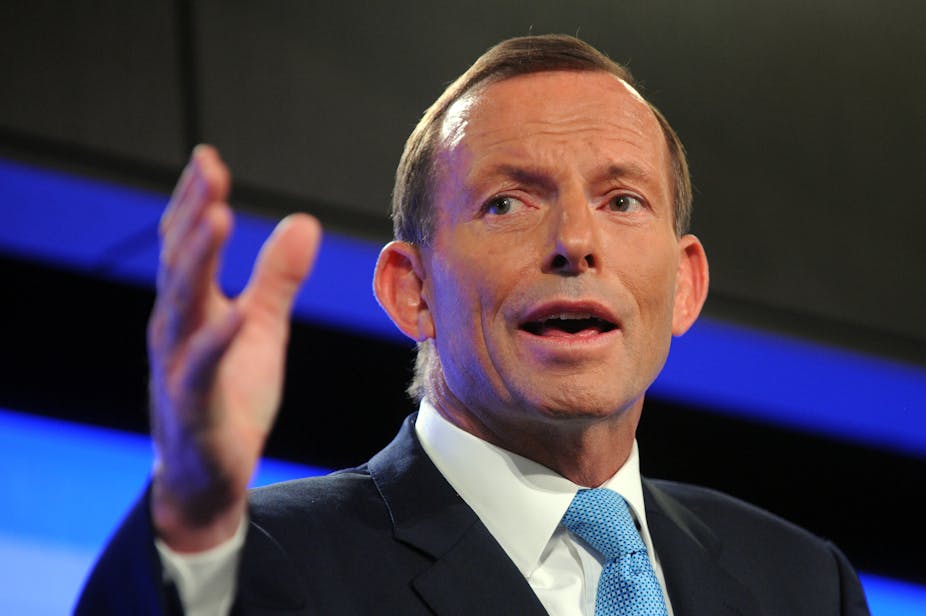One of the largest political graveyards is that occupied by former opposition leaders such as Mark Latham who promise in their first interviews to come out fighting. They excite their party base but alienate voters looking for pragmatic solutions.
Tony Abbott is an exception. But his success has been less a reflection of his own talents than Labor’s own difficulties. Some of Labor’s problems have verged on self-harm: the “real Julia” fiasco of the last election and the mishandling of marriage equality are examples. To be fair to Labor, this is not an easy time to be in government, having to grapple with an economy in transition. It has been a dream run for Tony Abbott but rather like Geelong after Grand Final day in 2008, it all starts again now.
In the past 20 years, Labor has won two federal elections outright: 1993 and 2007. Both of these were elections at which voters perceived clear differences between the parties, cared about the result of the election and as a result felt positive about the political process, even Coalition voters.
Labor benefits by enthusiasm, the Coalition by disinterest. In the past year Julia Gillard has sought to re-energise Labor supporters and campaign on the party’s strengths. The Coalition does best when policy is less of an issue. In 1993 Labor won on policy; voters actually liked John Hewson more than Paul Keating.
So Tony Abbott’s challenge is to mount an energetic campaign but not a polarising one. For a conservative politician, polarisation is useful for motivating core supporters but as a tool it has to be kept strictly under control. John Howard baited the left to frenzy and won the swooning endorsement of conservative intellectuals, but this was not his public persona. Last year Mitt Romney alienated large groups of voters on principle.
Tony Abbott is determined to follow the example of Howard, not Romney. The opposition leader’s address to the National Press Club provides an outline of the Coalition’s approach: appeal to a general sense of discontent, focus on a few consensual issues (such as hostility to asylum seekers) and try to neutralise Labor’s advantage on health, the environment and education.
Julia Gillard’s address on Wednesday cast herself as a policy wonk, and appealed to the media on this basis. Abbott seeks to present himself to journalists as a “good bloke” and a compassionate conservative. The reference to indigenous issues in his address is part of this strategy.
The core aspect of Abbott’s critique of Labor is economic, but the days of voter excitement about economic policy ended with the death of socialism. Debt and deficits are a convenient talking point for conservatives, rather like education for Labor. Abbott also has to distinguish his approach from the “Austrian” economic theories of the hard right, such as his new business advisor Maurice Newman. These thinkers look forward to drastic de-leveraging of public and private debt and a consequent severe recession.
So Abbott’s economic appeal is historical. He evokes the “golden age” of the Howard government, promising to return voters to the summer of 2007 minus WorkChoices. The details of this radiant future are unclear: “some of the upward pressure on prices” will be removed for example. Does his passing reference to household wealth imply a strategy to boost house prices?
Cultural politics is a potential challenge for Abbott. Voters over time have become more liberal on social issues. Abbott’s avowed conservatism excites the conservative commentariat but scares some voters, particularly women. It took the Liberals a long time to recover from their late 1990s flirtation with the radical right. A focus on asylum seekers appeals to voters but it also placates social conservatives in the Liberal Party. It is impossible to keep Cory Bernardi silent but the current of Liberal opinion that sympathises with his positions has to be kept as quiet as possible.
In his Press Club address Abbott declared:
One of John Howard’s great achievements in stopping the boats was to rebuild public support for a large, non-discriminatory immigration program. An immigration program pitched to our economic needs and humanitarian obligations has not only been good for Australia, it’s helped to create Australia.
The argument that Howard’s asylum seeker policies contributed to public support for immigration is an article of faith on the business friendly centre-right. Abbott’s stand of “stop the boats” gives him space to espouse a cultural pluralism out of step with many Liberals. This is important for the Liberals’ electoral fortunes. At the 2010 election Abbott won support from both sides of the immigration debate in Sydney. Labor lost votes on border protection but many non-Anglo voters swung to the Liberals, or voted informal, in response to Labor’s opportunistic embrace of population sustainability. In 2010 the Liberals made major advances in the non-Anglo middle ring of Sydney suburbs, and in September they will target these “ethnic” seats.
Health and education are traditional areas of Labor strength, but at the 2010 election Labor lost significant ground in public opinion. Labor has worked hard to rebuild its advantage here. The Liberals will play defensive; vague rhetoric about community control is combined with promises to do more in the future when the budget has been resolved.
A long campaign lies ahead for Tony Abbott, but his priorities are clear, and his strategy is steeped in the values of the last Liberal government. It remains to be seen whether Abbott the “good bloke” resonates with John Howard’s Aussie battlers.

